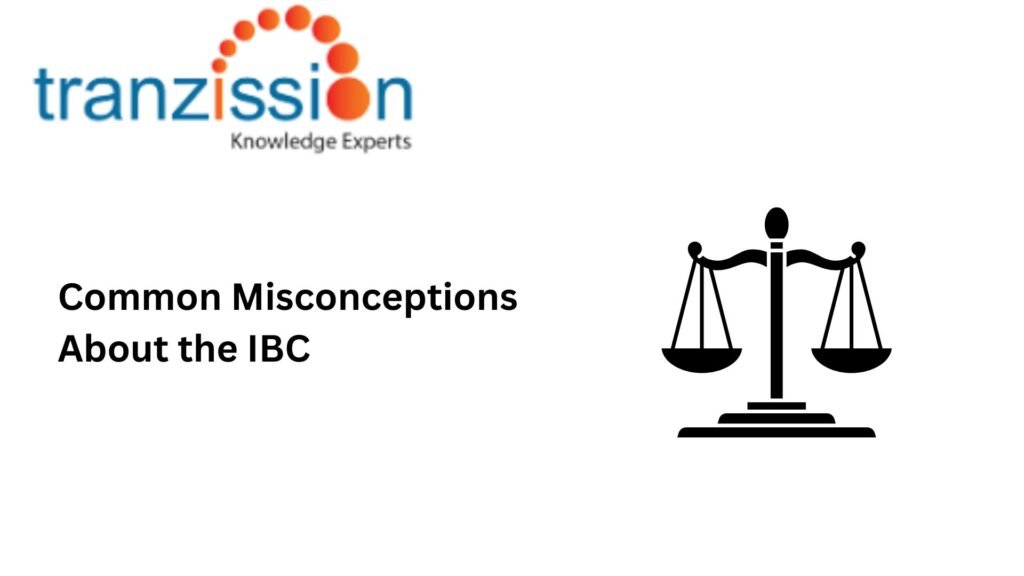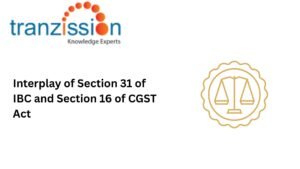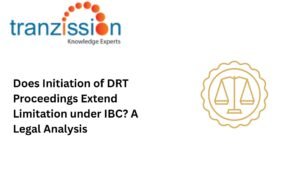
Common Misconceptions About the IBC

Table of Contents
Common Misconceptions About the IBC often overshadow the true purpose of the Insolvency and Bankruptcy Code, 2016 (“the IBC”), which is a comprehensive law designed to address corporate insolvency. While it’s a powerful tool, several myths surround its effectiveness and implementation. It was enacted for companies, firms, or individuals that are unable to pay their debts. This inability to meet financial obligations triggers the corporate insolvency resolution process (CIRP).
Debunking Common Misconceptions About the IBC
IBC is Merely a Debt Recovery Tool
The IBC is designed for insolvency resolution and revival of distressed entities, rather than solely focusing on debt recovery. It aims to provide a structured process for companies’ financial difficulties, allowing them to reorganise and potentially continue operation. While debt recovery may be a natural outcome of the resolution process, it is not the goal of the IBC and its common Misconceptions About the IBC
Solvent Companies Can Be Admitted into Insolvency Proceedings
Another Misconceptions About the IBC and only entities unable to pay their debts qualify for the CIRP. This inability to meet financial obligations triggers CIRP. While the IBC does allow for insolvency proceedings against solvent companies, it’s generally not the intended outcome. The primary objective is to revive struggling businesses and protect creditors, not punish solvent companies.
Resolution Plans Are Final and Irrevocable
Approved resolution plans can be revisited due to procedural lapses or violations of the law. The Bhushan Power and Steel Limited case highlighted the importance of adhering to the IBC and its regulations, emphasising that legal compliance should take precedence over commercial interests. The court’s decision was based on identifying several procedural failures during CIRP, including non-compliance with the IBC, lack of transparency, and delays.
The IBC Ensures Timely Resolution Within 330 Days
Despite the IBC’s prescribed 3300-day resolution under section 12, including extensions and delays, a significant number of cases exceed this limit due to systemic inefficiencies, such as backlogs in the National Company Law Tribunal (NCLT) and appellate processes. The delay in adjudication affects asset valuation, leading to erosion in recovery rates for creditors.
Asset Value Maximization Equals Highest Bid
The IBC focuses on maximizing asset value through sustainable revival, not necessarily the highest monetary bid. While it aims to maximise asset value and ensure efficient recovery for creditors, the insolvency professional or the Committee of Creditors (CoC) has the discretion to reject the highest bid if it’s deemed insufficient to achieve the true value of the asset.
Shareholders Are Protected During Insolvency
Equity shareholders are residual claimants, meaning they have the lowest priority in receiving payouts from the company’s assets. They only receive a share of the remaining assets after all other creditors, including secured creditors, bondholders, and preference shareholders, as per section 53 of the IBC, have been paid. In fact, in many cases such shareholders may not receive any payout at all.
Directors Automatically Face Personal Liability
Directors of the company are not personally liable for the company’s debts. However, this principle can be circumvented under certain circumstances, particularly when directors provide personal guarantees or engage in fraudulent activities, or when they breach their fiduciary duties.
Pre-Packaged Insolvency is a Loophole for Promoters
Pre-Packaged Insolvency Resolution Process (PPIRP) is intended for MSMEs and involves strict eligibility criteria and creditor approval. PPIRP offers a faster and less disruptive alternative to the standard of the resolution process under the IBC.
Operational Creditors Have Equal Standing with Financial Creditors
While operational creditors can initiate insolvency proceedings, financial creditors hold significant influence in the CoC, as per the reading of section 21 and the priority basis in section 53. Operational creditors may be represented in the CoC, but their representation is limited and their voting rights are typically non-existent.
The IBC Has Resolved All Insolvency Challenges
The IBC aims for a time-bound resolution process, but cases have experienced delays due to litigation, overburdened tribunals, and procedural complexities. Varying judicial interpretations, particularly regarding the priority of payments to different creditors, have created confusion and challenges for resolution professionals and stakeholders. This can lead to uncertainty and delays in resolving cases.
Conclusion
The IBC is a complex and multifaceted law with the potential to be a valuable tool for resolving corporate insolvency. It’s crucial to understand its complexities and the various factors that can influence the outcome of the process. By dispelling common myths and gaining a better understanding of the IBC, stakeholders can make informed decisions and navigate the process more effectively.
Read more :





